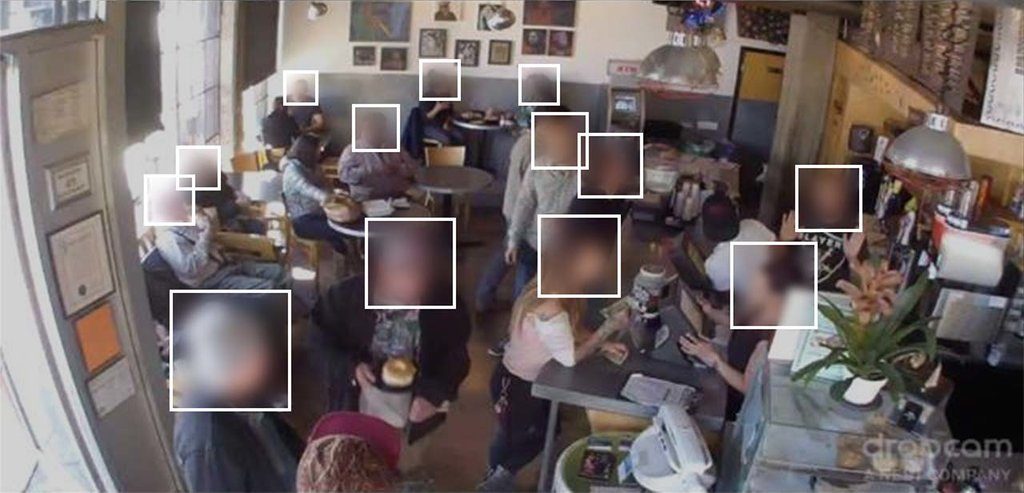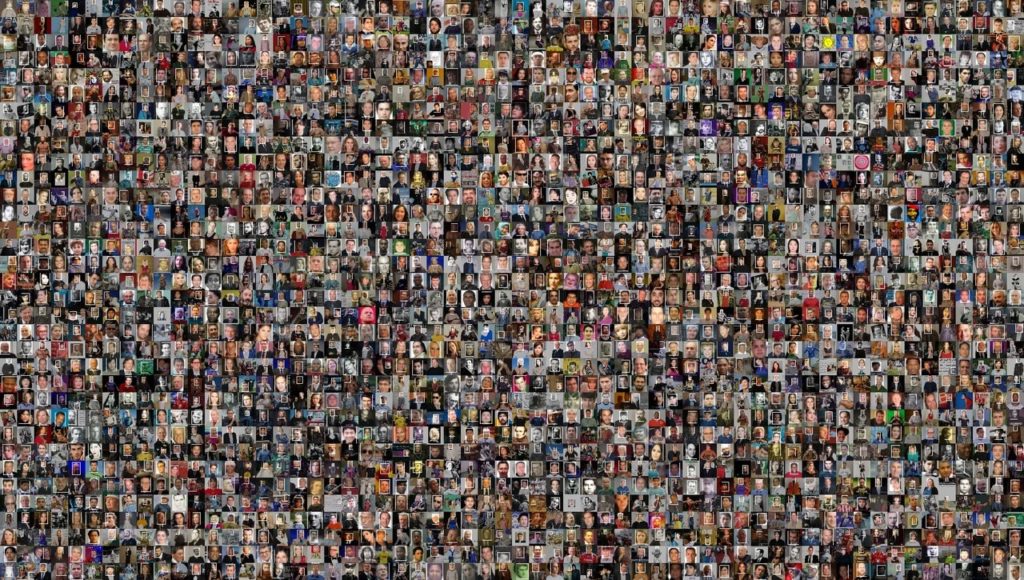Facial Recognition Tech Is Growing Stronger, Thanks to Your Face
WHISTLEBLOWING - SURVEILLANCE, 15 Jul 2019
Cade Metz – The New York Times

The Brainwash database, created by Stanford University researchers, contained more than 10,000 images and nearly 82,000 annotated heads.
Open Data Commons Public Domain Dedication and License, via Megapixels
13 Jul 2019 — Dozens of databases of people’s faces are being compiled without their knowledge by companies and researchers, with many of the images then being shared around the world, in what has become a vast ecosystem fueling the spread of facial recognition technology.
The databases are pulled together with images from social networks, photo websites, dating services like OkCupid and cameras placed in restaurants and on college quads. While there is no precise count of the data sets, privacy activists have pinpointed repositories that were built by Microsoft, Stanford University and others, with one holding over 10 million images while another had more than two million.
The face compilations are being driven by the race to create leading-edge facial recognition systems. This technology learns how to identify people by analyzing as many digital pictures as possible using “neural networks,” which are complex mathematical systems that require vast amounts of data to build pattern recognition.
Tech giants like Facebook and Google have most likely amassed the largest face data sets, which they do not distribute, according to research papers. But other companies and universities have widely shared their image troves with researchers, governments and private enterprises in Australia, China, India, Singapore and Switzerland for training artificial intelligence, according to academics, activists and public papers.
Interested in All Things Tech?
The Bits newsletter will keep you updated on the latest from Silicon Valley and the technology industry.
Companies and labs have gathered facial images for more than a decade, and the databases are merely one layer to building facial recognition technology. But people often have no idea that their faces are in them. And while names are typically not attached to the photos, individuals can be recognized because each face is unique to a person.

A visualization of 2,000 of the identities included in the MS Celeb database from Microsoft.
Open Data Commons Public Domain Dedication and License, via Megapixels
TO CONTINUE READING Go to Original – nytimes.com
Tags: Big Brother, Conflict, Human Rights, Media, Privacy rights, Social media, Spying, Surveillance, Technology
DISCLAIMER: The statements, views and opinions expressed in pieces republished here are solely those of the authors and do not necessarily represent those of TMS. In accordance with title 17 U.S.C. section 107, this material is distributed without profit to those who have expressed a prior interest in receiving the included information for research and educational purposes. TMS has no affiliation whatsoever with the originator of this article nor is TMS endorsed or sponsored by the originator. “GO TO ORIGINAL” links are provided as a convenience to our readers and allow for verification of authenticity. However, as originating pages are often updated by their originating host sites, the versions posted may not match the versions our readers view when clicking the “GO TO ORIGINAL” links. This site contains copyrighted material the use of which has not always been specifically authorized by the copyright owner. We are making such material available in our efforts to advance understanding of environmental, political, human rights, economic, democracy, scientific, and social justice issues, etc. We believe this constitutes a ‘fair use’ of any such copyrighted material as provided for in section 107 of the US Copyright Law. In accordance with Title 17 U.S.C. Section 107, the material on this site is distributed without profit to those who have expressed a prior interest in receiving the included information for research and educational purposes. For more information go to: http://www.law.cornell.edu/uscode/17/107.shtml. If you wish to use copyrighted material from this site for purposes of your own that go beyond ‘fair use’, you must obtain permission from the copyright owner.
Read more
Click here to go to the current weekly digest or pick another article:
WHISTLEBLOWING - SURVEILLANCE: